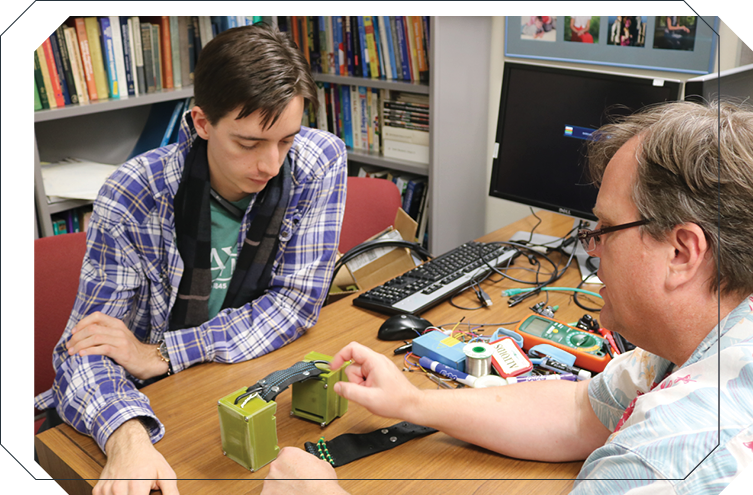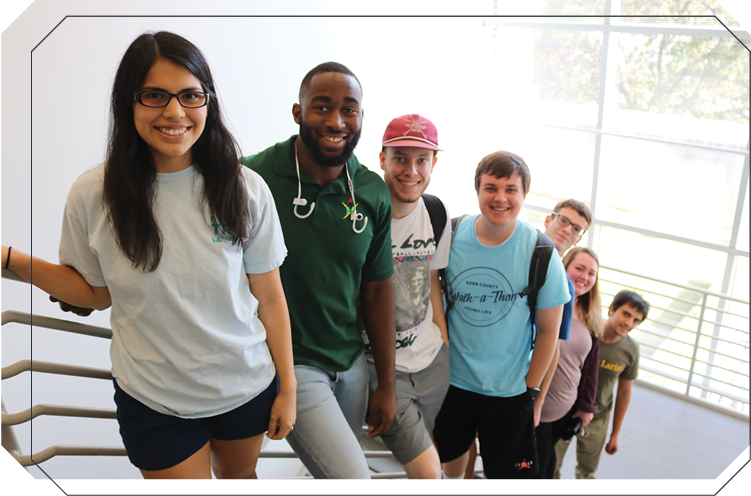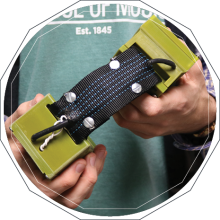Senior Design: The Ultimate Learning Experience
When hiring, companies and clients are not only looking for students who have earned good grades, they are looking for students who have experience in their respective fields.
Gaining real world experience is one of the major benefits to receiving a Baylor education—it is not only guaranteed, it is required. All engineering students take a rigorous design course during their junior and senior years that puts their technical knowledge to the test.
These projects give students the opportunity to work with clients and to design and create a product on their behalf. During the Fall 2017 semester, students were tasked with some unique requests, one of which was to design a motorized scooter for pediatric patients. The other, to design a wireless cougar tracking system.
The first project was assigned and funded by Deirdre and Bruce Shead. Bruce Shead is the founder and owner of the company ZOOfari Adventure, a business that produces and rents hypoallergenic animal-themed scooters for retail and special event settings. Shead tasked the Baylor senior design team with modifying the scooters to better assist children with hospital and therapy needs.
“ZOOfari Adventure provides motorized animal scooters, allowing both children and adults to grab the handles of their imaginations and create adventures of a lifetime. Early on in our business, we recognized a gap in being able to meet the needs of customers with physical challenges. We [partnered] with Baylor Engineering to develop animal scooters equipped for children with physical limitations to use while in hospital and therapy settings.”
Specific project objectives included criteria such as: keeping children securely supported while riding, adding a reverse direction on the scooter, creating support to secure necessary medical apparatus (such IV bags and lines), and providing the ability to convert to manual or remote control to allow caregivers to operate the scooter when necessary.
In order to fill the requests, the design team made a few modifications to the original scooter design. They added a braking system and parking brake in order for patients to stably mount and dismount the cart. They also brought the handle bars in closer for children who may be weaker in upper body strength.
When asked about what they enjoyed most about this class, the students on the team praised the experience they gained from the project.
Senior Steven Rahimian commended the overall realness of the project.
“This is a much more real-world experience type of class. You are the one who needs to problem solve, and it is much more hands on. It’s cool to not have all of the answers and to try figuring it out for yourself.”
Senior Evan Taliana claimed that this project has prepared him for future career endeavors.
“This is something potential employers have always asked about in my interviews, so it has really prepared me for a future in the industry.”
In another senior design project, students were assigned development of a tracking device that could be attached to large cats in order to collect data.
The project was funded by Primero Conservation, a nonprofit working to develop a management model for natural resources and private ranch lands in order to eliminate lethal predator control. Primero’s design assignment tasked the students with creating a lightweight system to monitor the movement and hunting of large wildcats.
According to Primero Conservation’s website, “Baylor Electromechanical Systems (BES) [was] tasked with developing a tracking system that provides for effective and unobtrusive attachment to various sizes of cats, collects and periodically transmits data according to protocols provided, and maintains power for extended periods of time.”
The design team examined features of the current tracking models used by Primero Conservation and came up with a new design that used lighter, more durable material that would be less likely to inhibit any of the animals’ typical activity. On the electrical side, they had to find a way to send the GPS tracking data from the device to a satellite network. The students also had to develop a remote release mechanism so that researchers could retrieve the device if necessary.
One of the co-leaders on this project, senior Wolfgang Draving, explained what he enjoyed most about the overall experience.
“The most rewarding part of the project was seeing team members’ plans become real, functioning parts of the device. We collectively spent many hours brainstorming and then refining ideas, and by the end of the semester we were able to see and touch these ideas, each of which were products of a semester of individual creativity and careful calculation.”
Co-leader, senior Jess Hastings, also praised the realness of the experience and how it prepared her to pursue a career after graduation.
“Senior Design has prepared me to work well with a team while under the pressure of a deadline. The short timeframe in which research, design, prototyping and construction are to be completed requires efficiency and communication. You must be able to delegate and trust others to complete their work well in order to get the task done. Senior Design forced me to trust my peers and relinquish control over every detail of the project. This prepared me for a similar style of team-oriented work that many engineering firms use in industry.”
Regardless of the task at hand, students find the experience gained from taking this course invaluable to their future success. Within the Baylor environment, students are able to both learn more about engineering and put their own designs to the test—it is truly the ultimate learning experience.



